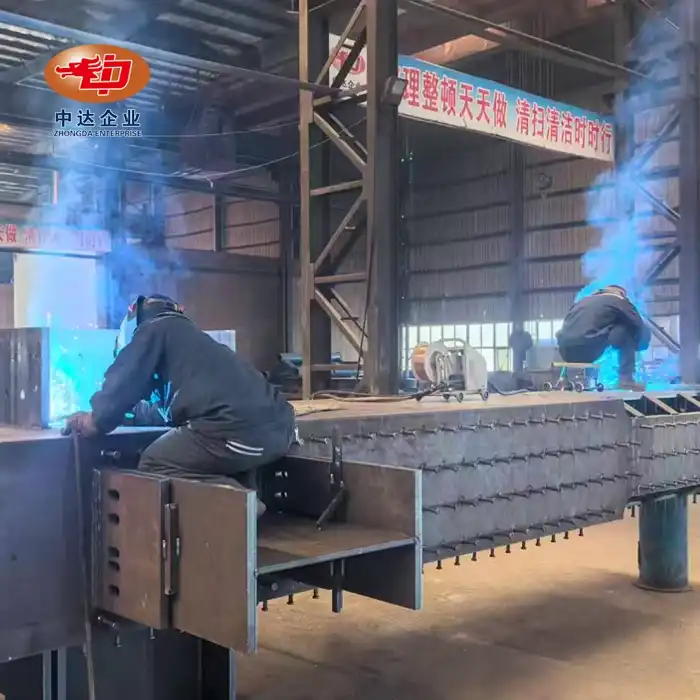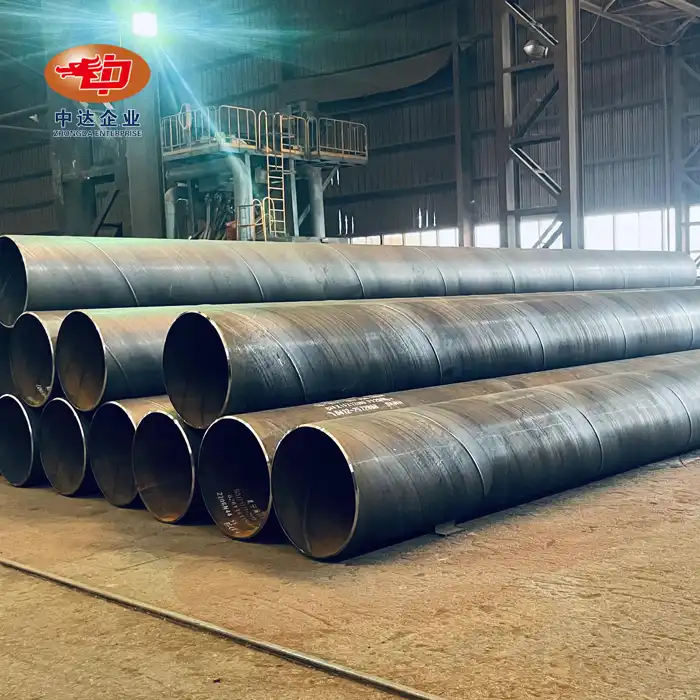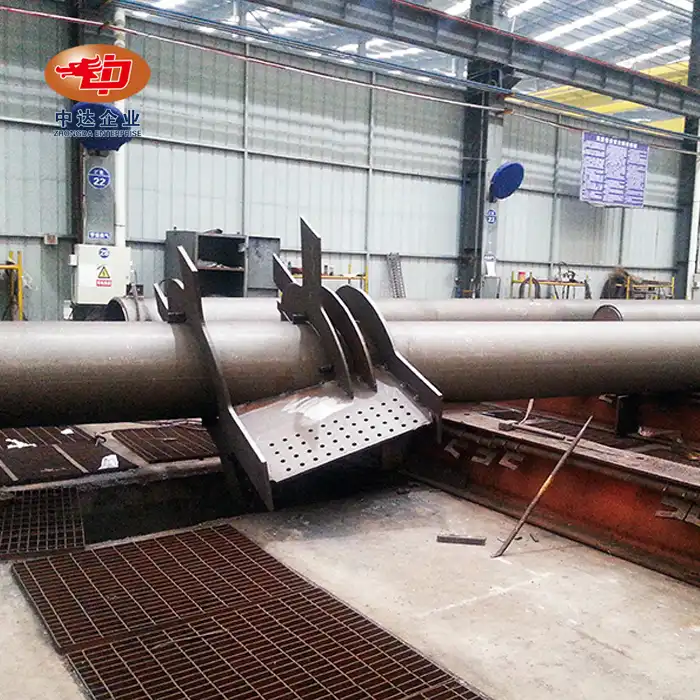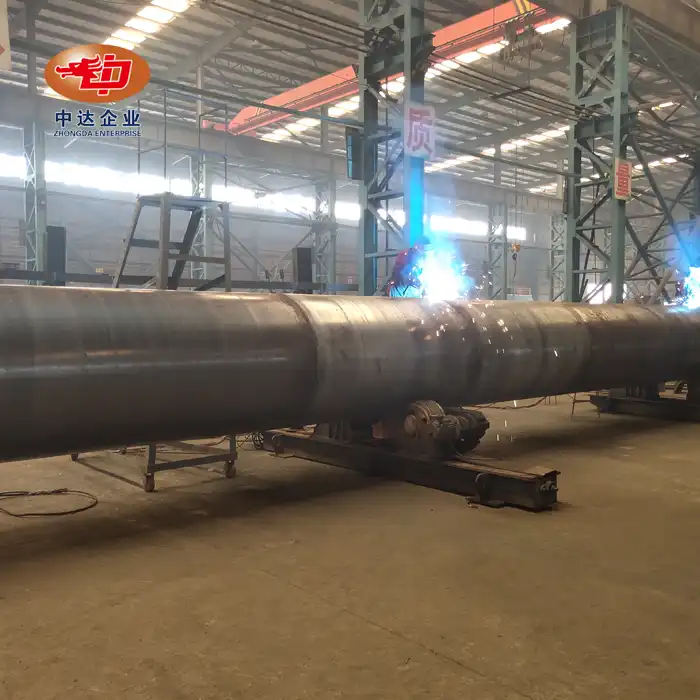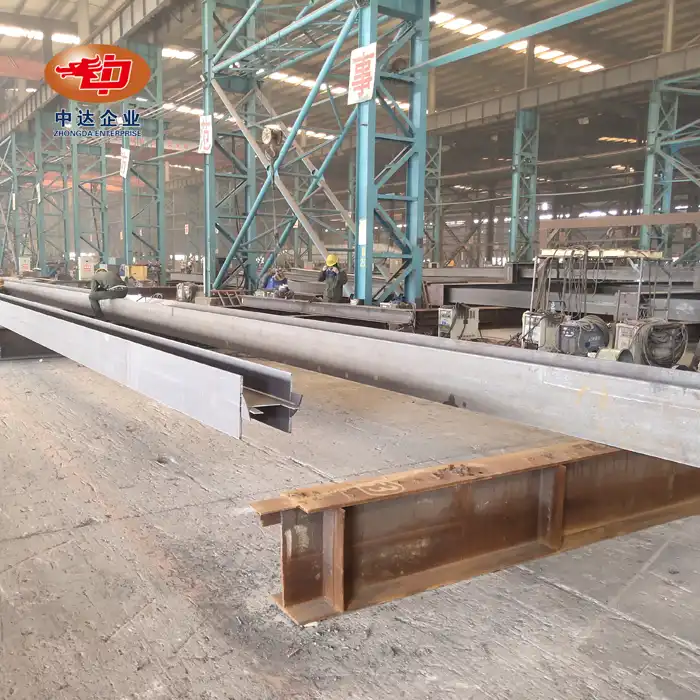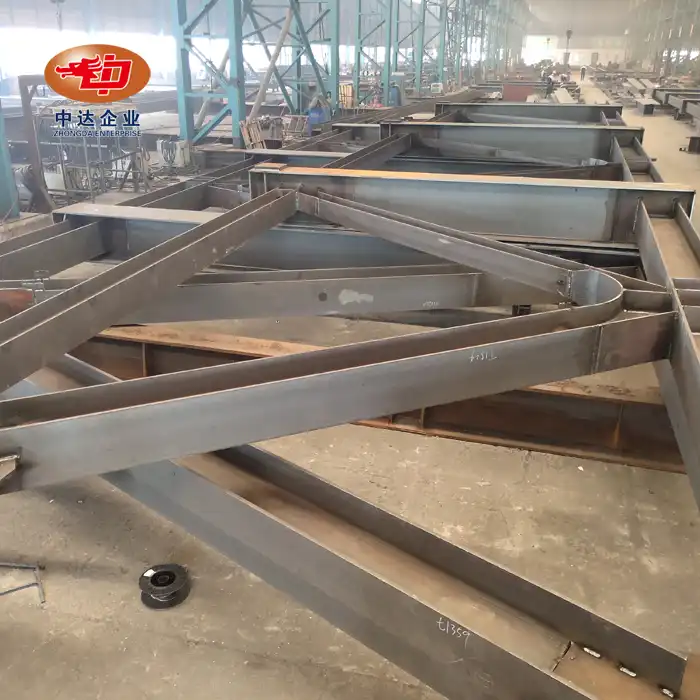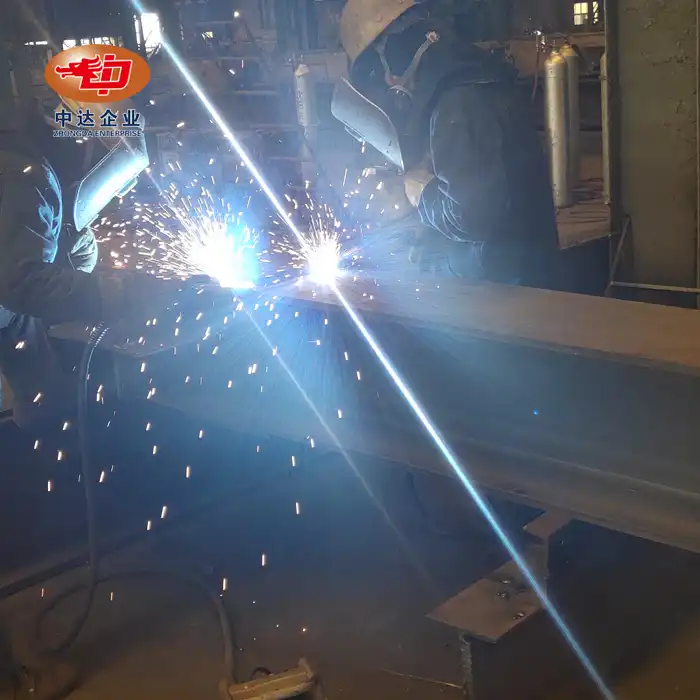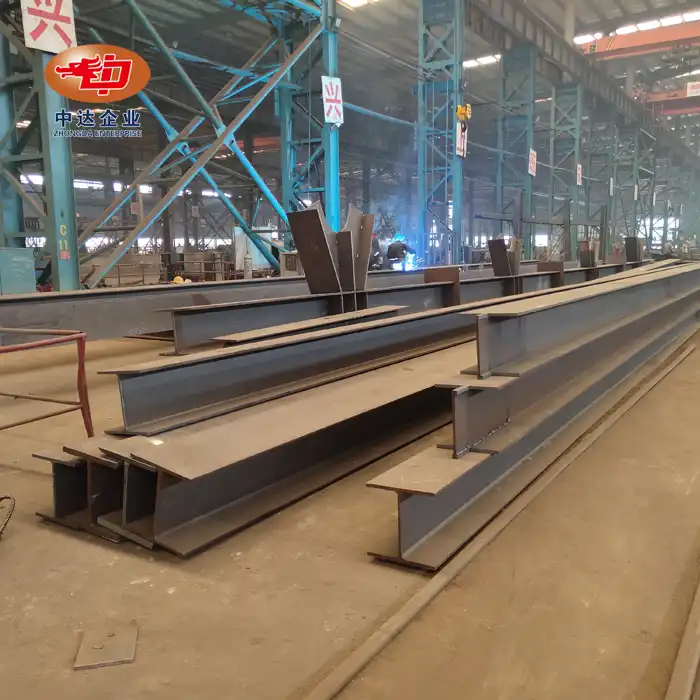
Durability of Steel Concrete Composite Beams in Harsh Environments
Steel concrete composite beams offer exceptional durability in harsh environments, combining the strength of structural steel with the resilience of reinforced concrete. These innovative structures, pioneered by industry leaders like Shenyang Zhongda Steel Structure Engineering Co., Ltd., demonstrate remarkable longevity under challenging conditions. With proper design, high-quality materials, and expert fabrication, composite beams can withstand corrosive atmospheres, extreme temperatures, and heavy loads for decades. Their unique composition allows for enhanced resistance to environmental stressors, making them ideal for bridges, industrial facilities, and coastal structures where traditional materials may falter.
Factors Affecting Composite Beam Durability in Harsh Conditions
Material Selection and Quality
The durability of steel concrete composite beams starts with superior material selection. High-strength steel, such as Q345D used by Zhongda Steel, provides excellent load-bearing capacity and corrosion resistance. Pairing this with high-performance C50 concrete creates a robust composite structure. The quality of these materials significantly impacts the beam's ability to withstand harsh environments.
Careful attention to concrete mix design is crucial. Additives like silica fume or fly ash can enhance the concrete's density and reduce permeability, improving resistance to chemical attacks. Similarly, selecting the right grade of steel ensures optimal performance under varying environmental stresses.
Zhongda Steel's commitment to quality is evident in their use of Φ19×150mm shear studs with a minimum capacity of 150kN, ensuring strong steel-concrete bonding even under extreme conditions. This attention to material quality and compatibility is fundamental to achieving long-term durability in challenging environments.
Environmental Considerations
Different harsh environments pose unique challenges to composite beams. Coastal areas expose structures to salt spray and high humidity, accelerating corrosion. Industrial settings may subject beams to chemical attacks or extreme temperature fluctuations. Seismic zones require structures to withstand dynamic loads and potential ground movement.
Understanding these environmental factors is crucial for effective design and material selection. For instance, Zhongda Steel's composite beams have passed rigorous 8-degree seismic tests, making them suitable for earthquake-prone regions. Their anti-corrosion treatments, such as galvanizing or epoxy coating, provide additional protection in corrosive atmospheres.

Climate considerations also play a role in durability. Freeze-thaw cycles can cause concrete deterioration, while extreme heat can affect steel properties. Composite beams must be designed to accommodate these thermal stresses and maintain structural integrity across a wide temperature range.
Design and Construction Practices
Proper design and construction practices are essential for ensuring the durability of steel concrete composite beams in harsh environments. This includes careful detailing to prevent water ingress, adequate concrete cover to protect reinforcement, and appropriate drainage systems to minimize moisture exposure.
The design should also account for potential future environmental changes. For example, increasing the concrete cover or specifying more robust protective coatings can provide an extra margin of safety against long-term environmental degradation.
During construction, proper curing of concrete is critical to achieve its full strength and durability potential. Zhongda Steel's standard 45-day delivery time, which includes a 28-day curing period, ensures that the concrete component reaches optimal strength before installation.
Enhancing Durability Through Innovative Technologies
Advanced Coating Systems
Innovative coating technologies play a crucial role in enhancing the durability of steel concrete composite beams. Zhongda Steel employs state-of-the-art coating systems that go beyond traditional galvanizing or epoxy treatments. These advanced coatings provide multi-layered protection against corrosion, UV radiation, and chemical attacks.
Nanotechnology-based coatings are emerging as a game-changer in durability enhancement. These ultra-thin coatings can penetrate deep into the steel surface, forming a strong bond that significantly improves corrosion resistance. Some advanced coatings also offer self-healing properties, automatically sealing minor damage to maintain continuous protection.
For concrete components, hydrophobic impregnations and surface sealers can dramatically reduce water and chloride ingress, extending the service life of the composite structure in moisture-rich environments. Zhongda Steel's expertise in applying these cutting-edge coating technologies ensures maximum protection for their composite beams in harsh conditions.
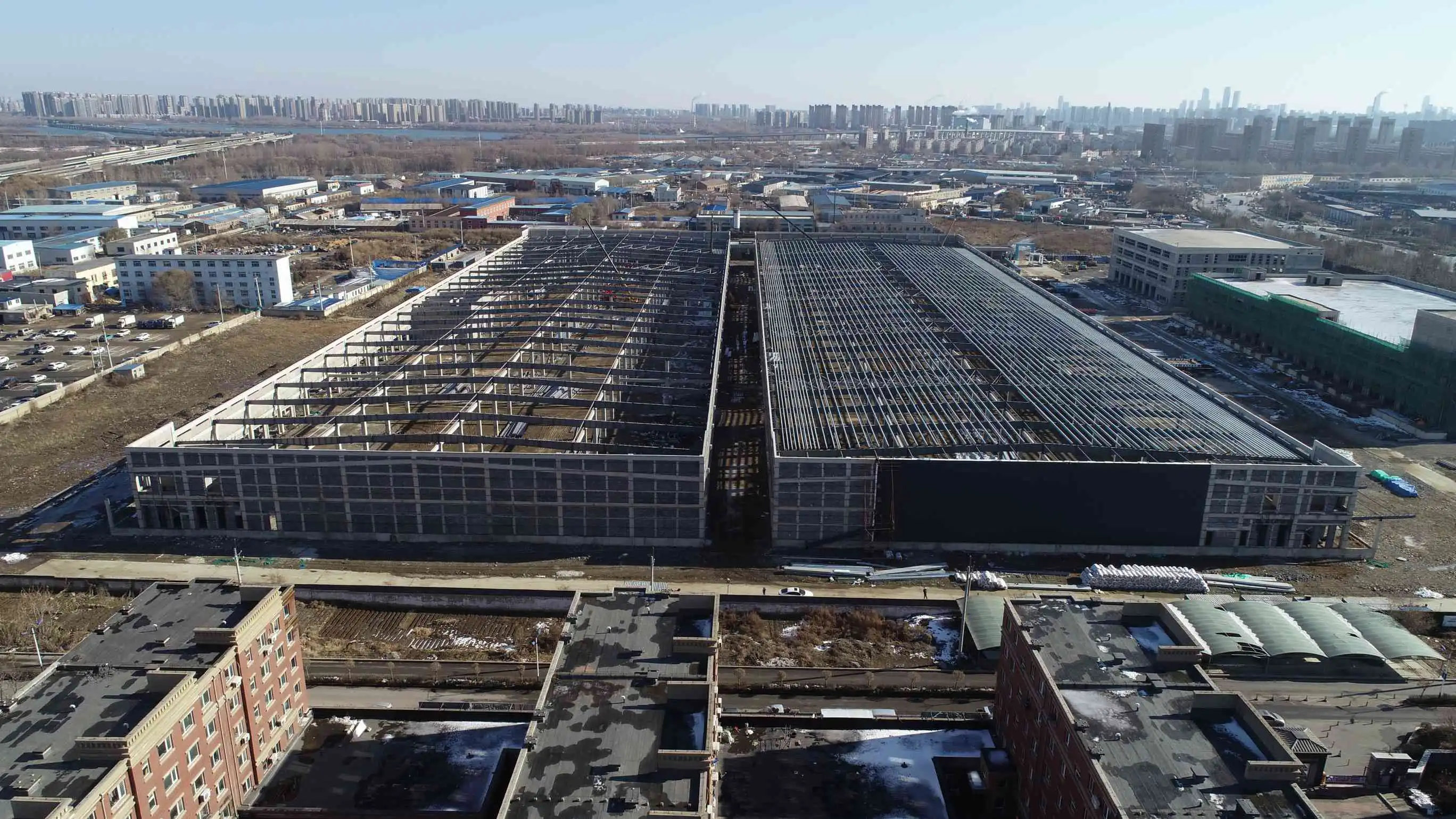
Smart Monitoring Systems
Implementing smart monitoring systems can significantly contribute to the long-term durability of steel concrete composite beams. These systems use embedded sensors to continuously monitor structural health, environmental conditions, and load distributions. By providing real-time data, they allow for proactive maintenance and early detection of potential issues.
Fiber optic sensors can measure strain, temperature, and vibration across the entire length of a composite beam. This technology enables precise monitoring of structural behavior under various environmental stresses. Corrosion sensors embedded in critical areas can detect the onset of corrosion long before visible signs appear, allowing for timely intervention.
Zhongda Steel incorporates these advanced monitoring capabilities into their composite beam designs upon request, offering clients enhanced control over their structure's performance and longevity in harsh environments. This proactive approach to structural health monitoring is particularly valuable for critical infrastructure projects in challenging locations.
High-Performance Concrete Mixes
Advancements in concrete technology have led to the development of high-performance mixes specifically designed for harsh environments. These specialized concretes offer superior resistance to chemical attacks, freeze-thaw cycles, and abrasion, significantly enhancing the durability of composite beams.
Ultra-high performance concrete (UHPC) is one such innovation. With its extremely low porosity and high strength, UHPC provides exceptional durability in aggressive environments. It can be used in critical areas of composite beams to enhance overall performance and longevity.
Self-consolidating concrete (SCC) is another advanced mix that offers improved durability. Its ability to flow into complex forms and around reinforcements without segregation ensures better encapsulation of steel components, reducing the risk of corrosion. Zhongda Steel's expertise in utilizing these advanced concrete mixes in their composite beam production contributes to their products' superior performance in challenging conditions.
Maintenance Strategies for Long-Term Durability
Regular Inspections and Assessments
Maintaining the durability of steel concrete composite beams in harsh environments requires a proactive approach to inspection and assessment. Regular, comprehensive evaluations help identify potential issues before they escalate into serious problems. These inspections should cover both the steel and concrete components of the beam, as well as their interface.
Visual inspections can reveal surface defects, cracking, or signs of corrosion. However, more advanced techniques are often necessary for thorough assessment. Non-destructive testing methods such as ultrasonic testing, which Zhongda Steel provides reports for, can detect internal flaws or changes in material properties. Electrochemical techniques can assess the corrosion state of embedded steel reinforcement.
Establishing a regular inspection schedule, tailored to the specific environmental conditions and criticality of the structure, is crucial. For structures in particularly harsh environments, more frequent inspections may be necessary. Zhongda Steel offers guidance on optimal inspection intervals based on their extensive experience with composite beam performance in various settings.
Preventive Maintenance Techniques
Implementing preventive maintenance strategies is key to extending the lifespan of steel concrete composite beams in harsh environments. These techniques focus on addressing potential issues before they compromise the structure's integrity. Regular cleaning to remove corrosive substances, reapplication of protective coatings, and sealing of cracks are essential preventive measures.
Cathodic protection systems can be highly effective in preventing corrosion of steel components, particularly in marine environments. These systems work by applying a small electrical current to the steel, making it the cathode in an electrochemical cell and preventing the anodic reaction that leads to corrosion.
For concrete components, surface treatments such as silane sealers can be periodically applied to maintain water repellency and reduce chloride ingress. In areas prone to freeze-thaw cycles, ensuring proper drainage and applying de-icing salts judiciously can prevent concrete deterioration. Zhongda Steel provides comprehensive maintenance guidelines with their composite beams, ensuring clients can implement effective preventive strategies.
Repair and Rehabilitation Methods
Despite best efforts in design and maintenance, steel concrete composite beams in harsh environments may eventually require repair or rehabilitation. Having effective repair strategies in place is crucial for maintaining long-term durability. The choice of repair method depends on the nature and extent of the damage, as well as the specific environmental challenges.
For steel components, methods like weld repair, plate bonding, or section replacement can address localized damage. Advanced techniques such as fiber-reinforced polymer (FRP) wrapping can provide additional strength and corrosion protection. Concrete repairs may involve patching, crack injection, or in severe cases, partial replacement of the concrete deck.
Innovative repair materials, such as high-performance mortars or polymer-modified concretes, offer improved durability and better compatibility with existing structures. Zhongda Steel's engineering team can provide expert advice on the most suitable repair and rehabilitation methods for their composite beams, ensuring that repairs not only address current issues but also enhance future durability.
Conclusion
The durability of steel concrete composite beams in harsh environments is a testament to advanced engineering and material science. By combining high-quality materials, innovative designs, and rigorous maintenance practices, these structures can withstand the most challenging conditions for decades. Shenyang Zhongda Steel Structure Engineering Co., Ltd.'s commitment to excellence in composite beam manufacturing ensures that their products meet the highest standards of durability and performance. As environmental challenges continue to evolve, the ongoing development of new technologies and maintenance strategies will further enhance the resilience of these critical structural elements.
FAQs
What makes steel concrete composite beams suitable for harsh environments?
Their combination of steel strength and concrete durability, along with advanced design and protective measures, makes them highly resistant to environmental stressors.
How long can a properly maintained composite beam last in a harsh environment?
With proper maintenance, these beams can last 50-100 years, even in challenging conditions.
Are composite beams more expensive than traditional alternatives?
Initially, they may have higher costs, but their longevity and reduced maintenance needs often make them more cost-effective in the long run.
Choose Zhongda Steel for Durable Composite Beams
Shenyang Zhongda Steel Structure Engineering Co., Ltd. is your trusted partner for high-performance steel concrete composite beams. Our advanced manufacturing processes, rigorous quality control, and innovative designs ensure superior durability in harsh environments. With a proven track record in global projects and certifications like ISO 9001 and EN1090-2 EXC3, we deliver unmatched quality and reliability. Contact us at Ava@zd-steels.com to discuss your composite beam needs and experience the Zhongda difference in durability and performance.
References
Johnson, R.P. (2018). Composite Structures of Steel and Concrete: Beams, Slabs, Columns and Frames for Buildings. Wiley-Blackwell.
Dutta, S.C., & Roy, R. (2020). Advances in Steel-Concrete Composite Structures. Springer.
American Concrete Institute. (2019). Guide for the Design and Construction of Structural Concrete Reinforced with Fiber-Reinforced Polymer Bars. ACI 440.1R-15.
European Committee for Standardization. (2018). Eurocode 4: Design of composite steel and concrete structures. EN 1994-1-1.
International Federation for Structural Concrete. (2021). fib Model Code for Concrete Structures 2010. Ernst & Sohn.
Nawy, E.G. (2017). Prestressed Concrete: A Fundamental Approach. Pearson.
YOU MAY LIKE











